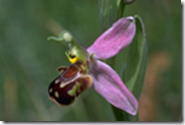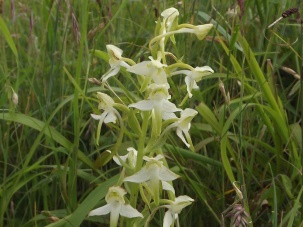
A pair of Red Kites have been seen in the village!
Kites are probably the most spectacular of our birds of prey. Not all that many years ago they were on the point of extinction in Britain – but after careful reintroductions they are now spreading out from their strongholds in Wales where they have become a tourist attraction, and are now common in Oxfordshire and the Midlands. They have made a couple of unsuccessful attempts to nest in Somerset but, not my knowledge, on the Mendips. They nest in out of the way woodland so our hillside woods – like Ebbor Gorge - should be ideal. It is possible they would be competing for nest sites and food with our Buzzards - but it will be many years before this would be a problem.
Butterflies.
Common Blues and hundreds of Meadow browns are out on Wattles fields. Also well worth looking out for are Scarlet Tiger moths , with brilliant red underwings. Once uncommon, in the last few years they have been seen all around the village.
Hopefully above the village. we should also soon see Chalkhill Blues, Ringlets and Marbled Whites
Flowers
Early purple Orchids have faded now – to be replaced on the edge of woods by Common Spotted Orchid . In the fields above look out for Pyramidal and
 |
 |
|
| Bee Orchids | and possibly, | Butterfly Orchid |
.

Bees
It was a fairly cold spring and bees didn’t have a good start to the year – I am told honey production was well down. If the weather stays warm and dry they will soon make up – but you can help. Whenever possible include native flowers in your garden. Though they might not be as showy or long flowering as some of the cultivated varieties they seem generally to be much more attractive to both hive and wild bees. Foxgloves are always good and perennials such as Field Scabious, Knapweeds and thistles – I did not say Creeping Thistle the gardeners nightmare! – try Woolly, Musk , or Stemless Thistles, they grow wild on our limestone hills. They are also food plant for that lovely migrant butterfly the Painted Lady.
(Stemless Thistles grow very close to the ground and if you have ever sat on one you will understand its more common name of ‘Picnic Thistle’ ! )
 Les Cloutman
Les Cloutman 